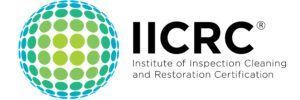We Provide Microbial & Bacterial Testing
Microbial & Bacterial testing is necessary if blackwater is involved due to a water incident. As bacteria die off, they produce potent toxins called Endotoxins.
Bacteria can release microscopic particles into the air. In addition, fragments of bacteria, often much smaller than spores, may be released into the air, potentially in much higher numbers than the spores and 20 times smaller than mold spores. These particles may settle on indoor surfaces and can be directly injested into the bloodstream thru human lungs.
Endotoxins attack the body on a cellular level. When the particles are airborne, they may be inhaled and enter the bloodstream through the alveoli; these can lead to many neurological disorders and harm the digestive tract and other areas of the body.
The Bacteria Testing Procedure and Reporting
Our staff of Certified Indoor Environmentalists employs a detailed approach to property inspections and bacteria testing while understanding the right indicators to look for that may indicate the presence or source of the bacteria.
Once we receive your test results, we will provide a comprehensive report to include the following:
- Detailed breakdown of test results
- Concise, informative written interpretation of data & findings
- Photographs of our inspection observations (when applicable)
- Recommendations regarding your next steps
- Remediation protocol suggestions, if deemed necessary
Common Bacteria Terms and Definitions
Bacteria
Bacteria are the primary colonizers or first organisms to grow after a water event occurs in any indoor environment. The most frequent bacteria species found are called Actinomycetes. These bacteria can produce biotoxins similar to mold and mycotoxins.
Bacteria, like Legionella, can grow and become airborne by other elements or various situations in homes, offices, healthcare buildings, and schools.
Endotoxins
These are released into the air from gram-negative bacteria when the cell wall is destroyed. Elevated levels are often found in water-damaged buildings and on moldy foods and can be very toxic. Found on the outer cell membrane of Gram-negative organisms, bacterial endotoxins are one of the most potent toxins known and strongly pyrogenic (fever-causing) substances. These toxins are harmless outside of the body and in the alimentary canal. They are extremely potent, however, once introduced in the bloodstream or intrathecally.
Actinomycetes
Actinomyces are another pathogen found in water damaged buildiings. It is a gram-positive, anaerobic organism with branching filaments that resemble fungi. While Actinomyces appears to be a fungus, it is classified as a bacteria due to its cell wall structure and genetic makeup. Actinomycosis of the central nervous system and Actinomycoma are two potential diagnosis associated with Actinomycetes in buildings.
We’re here to help! Simply call (919) 214-5000 to discuss your requirements.













